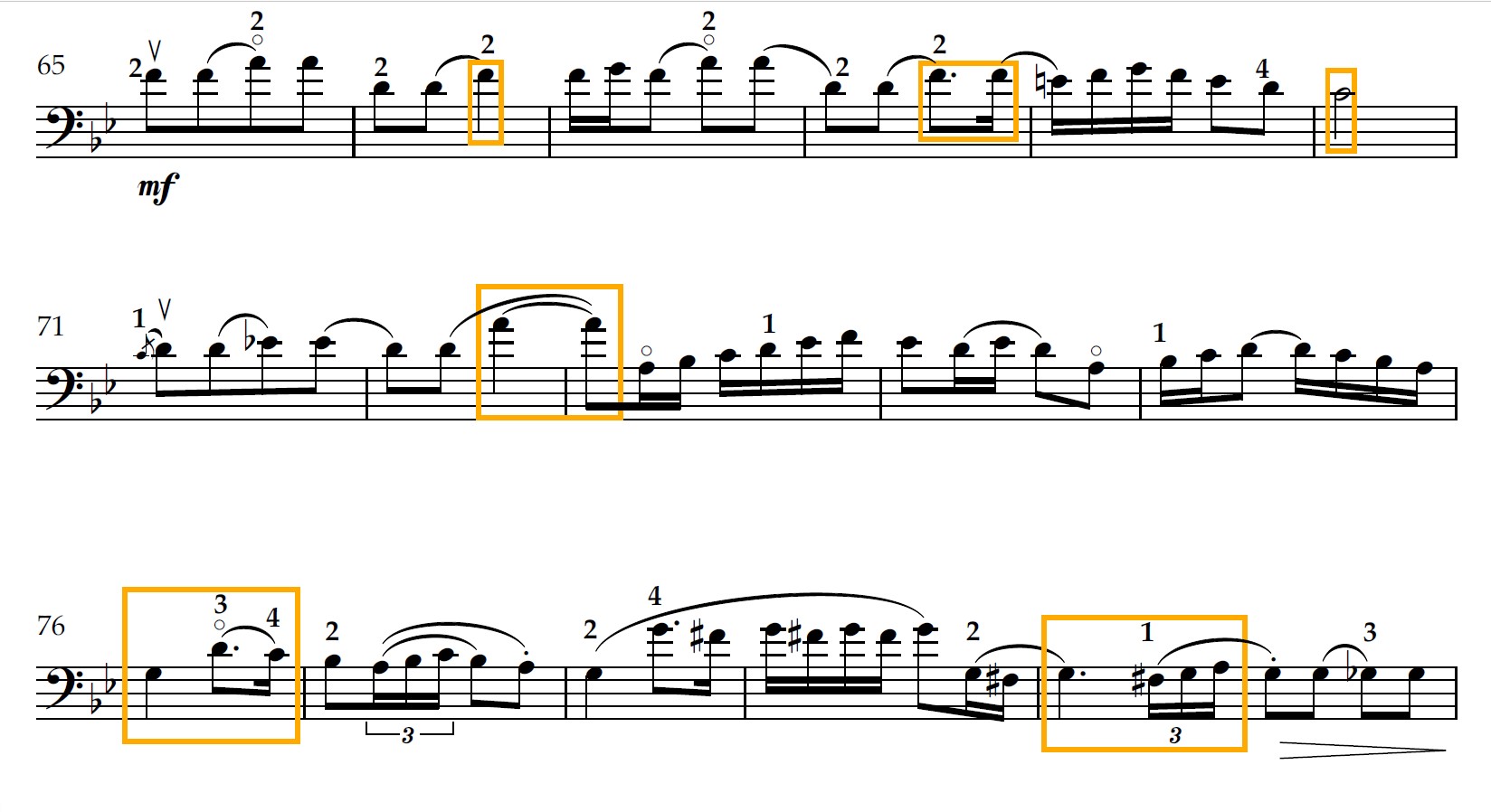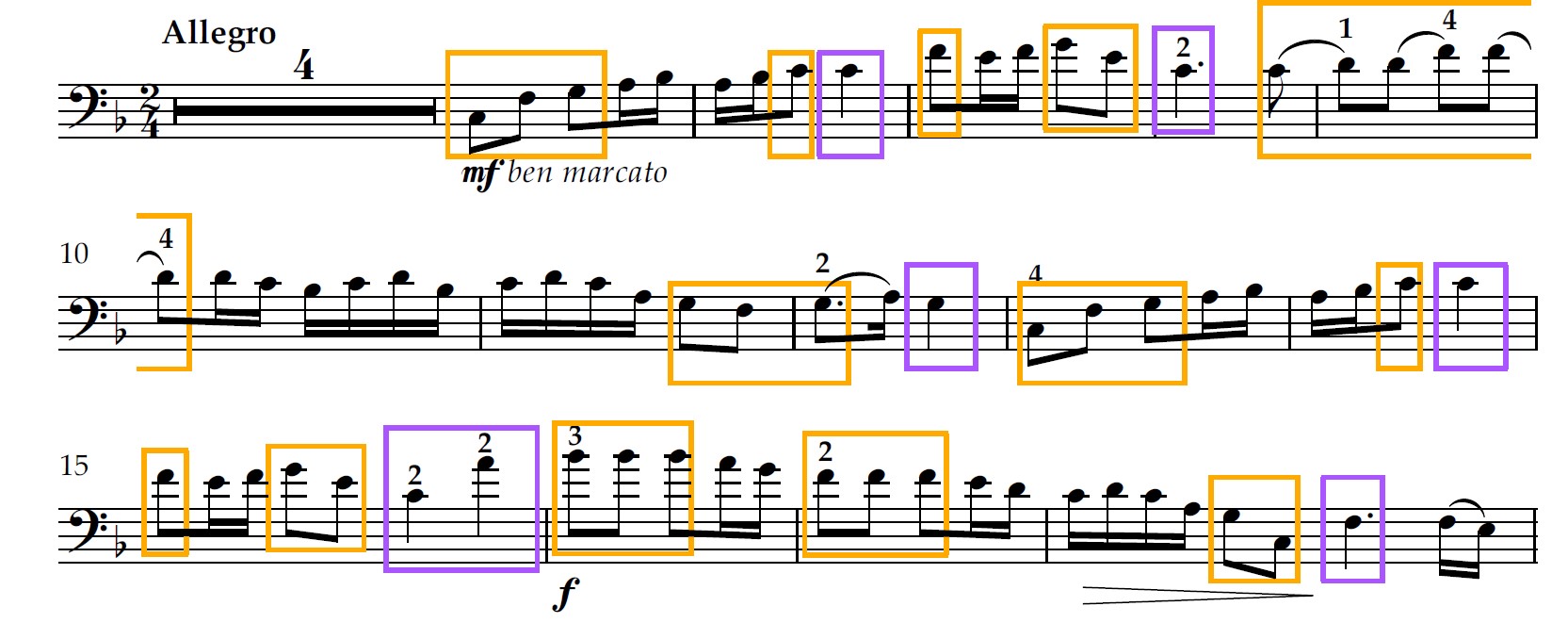Danse Rustique by Squire: Lesson Ideas
| Site: | ABRSM: Teacher Hub |
| Course: | Danse Rustique by Squire: Lesson Ideas |
| Book: | Danse Rustique by Squire: Lesson Ideas |
| Printed by: | Guest user |
| Date: | Thursday, 20 November 2025, 1:28 AM |
1. Pitch
Meet Ana! From an early age Ana developed a strong passion for teaching and since 2008 she has been teaching cello and conducting string orchestras at different independent schools and institutions in Berkshire. In this resource Ana shares some ideas about teaching Danse Rustique from our Grade 6 syllabus.After making your pupil aware of the two different key, look at the following passages separately. At bar 31, you can suggest your pupil plays the passage just with the left hand, thinking about the map of tones and semitones to follow, particularly while reaching sixth position. When bowing it out, you can work on coordination by stopping the bow on the string briefly, while the left hand reaches the new position. This will help focus on the coordination of right and left hand. This exercise is not to be played in time.

When reaching bar 51 and a new key, it is very common for students to get mixed up between the B flat and B natural (circled below) as well as the E flat while extending backwards in fourth position. Go through these carefully at the start of the reading process. The first note at bar 51 is a difficult note to pitch properly at the start of this section as the key has now changed. It tends naturally to be to high. Play the chord in the piano accompaniment and ask your student to tune the F carefully.

At Bar 21 we reach a double stop section with open strings - carefully practise the octave intonation of the notes circled below as the low D is an open string.

At the end of the piece we finish with two forte chords - remind your student of the importance of shifting to third position for the last three notes of the F major scale and remaining in the same position to the end of the piece. The fifths are tricky to tune, spend some time discussing the correct way of approaching these double stops.

2. Time
In the totality of the piece, the most difficult section in regards to the rhythm is between bars 65 and 81. This section needs to be practised with the metronome subdividing in quavers and bringing the pupil’s attention to the length of the notes circled below. Speed it up progressively maintaining the idea of the quaver subdivision.
3. Tone
Bring your students attention to the section from bar 51 to 57. Discuss together the length of all slurs. You will quickly notice that there is no regular pattern and these all have different durations. Since the tone has to be legato I advise my pupils to use the whole length of the bow with a light fluent stroke. Set the metronome in quavers and practise the following pattern using the whole bow.
Bring your student’s attention to the marking at the beginning of the piece.

Talk through the meaning of it - “With strong accentuation” How do we translate it into our bowing? Talk about the acceleration through the stroke and how it changes the articulation.
4. Shape
Although this is an Allegro and therefore a quick piece, the use of vibrato is very important to help shape the phrases, particularly in the middle section with the legato sound production. Try to vibrate all notes that are a crotchet or longer to start with. Start with the highlighted notes in purple, then add the ones in orange.